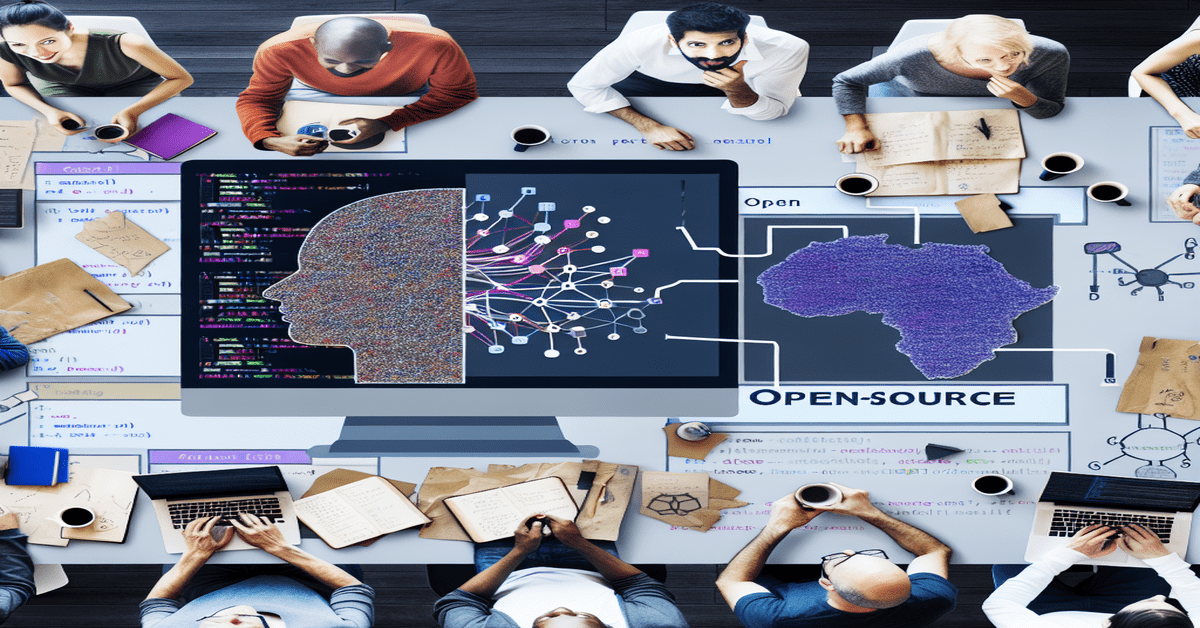The Rise of Open-Source AI: A Challenge to OpenAI’s Dominance
In the rapidly evolving landscape of artificial intelligence, OpenAI has been at the forefront with its cutting-edge models like GPT-4. However, as the AI industry continues to grow, a new contender has emerged: open-source AI models. These models, driven by the collaborative efforts of the AI community, are gaining momentum and posing a significant challenge to OpenAI’s dominance.
The Power of Community-Driven AI
One of the key advantages of open-source AI models is the strength of the community behind them. Projects like Hugging Face’s Transformers and BigScience’s BLOOM have garnered significant support from developers and researchers worldwide. The collaborative nature of these projects fosters innovation, transparency, and rapid development.
Open-source models benefit from the collective intelligence of the community, with contributors from diverse backgrounds and expertise. This collaborative approach leads to faster iterations, bug fixes, and feature enhancements. As a result, open-source AI models can evolve and improve at a pace that proprietary models may struggle to match.
Accessibility and Cost-Effectiveness
Another significant advantage of open-source AI models is their accessibility and cost-effectiveness. Proprietary models like those developed by OpenAI often come with substantial costs, making them inaccessible to smaller organizations or individual developers. In contrast, open-source models are freely available, allowing anyone to use, modify, and build upon them.
The cost savings associated with open-source models can be a game-changer for startups, researchers, and developers who may not have the financial resources to invest in expensive proprietary solutions. This accessibility democratizes AI, enabling a wider range of individuals and organizations to harness the power of these cutting-edge technologies.
Customization and Flexibility
Open-source AI models offer unparalleled customization and flexibility. Unlike proprietary models that are often pre-trained and rigid, open-source models can be easily modified and fine-tuned to suit specific use cases and domains. This adaptability is crucial in today’s diverse and rapidly changing business landscape.
With open-source models, developers have the freedom to experiment, iterate, and tailor the models to their unique requirements. Whether it’s adapting a language model for a specific industry or optimizing a computer vision model for a particular application, open-source AI provides the flexibility needed to create highly specialized and efficient solutions.
Transparency and Ethical Considerations
As AI becomes more prevalent in our daily lives, concerns about transparency and ethics have come to the forefront. **Open-source AI models address these concerns by providing complete transparency into their training processes, architectures, and datasets**. This level of transparency is essential for building trust and accountability in AI systems.
With open-source models, researchers and developers can scrutinize the inner workings of the AI, ensuring that it aligns with ethical principles and avoids biases or discriminatory behaviors. This transparency also facilitates reproducibility and enables the scientific community to validate and build upon existing research.
Navigating the Regulatory Landscape
As governments and regulatory bodies begin to establish guidelines and regulations for AI, **open-source models may have an advantage over proprietary solutions**. Open-source AI’s transparency and explainability align well with the increasing demands for responsible and accountable AI development.
Regulatory requirements often emphasize the need for AI systems to be transparent, auditable, and explainable. Open-source models, with their publicly available codebases and documentation, are well-positioned to meet these requirements. In contrast, proprietary models may face challenges in providing the necessary level of transparency and compliance.
The Future of AI: A Collaborative Ecosystem
While OpenAI’s models have undeniably pushed the boundaries of AI capabilities, the rise of open-source alternatives represents a significant shift in the AI landscape. The collaborative nature, accessibility, customization, transparency, and potential regulatory advantages of open-source AI models make them a force to be reckoned with.
As the AI industry continues to evolve, it is likely that we will see a more diverse and collaborative ecosystem, with both proprietary and open-source models coexisting and complementing each other. OpenAI’s innovations will undoubtedly continue to drive advancements, but the open-source community’s contributions will play an increasingly crucial role in shaping the future of AI.
It is an exciting time for AI enthusiasts, developers, and researchers. The rise of open-source AI presents endless possibilities for innovation, collaboration, and the democratization of powerful AI technologies. As we navigate this new landscape, it is essential to embrace the power of community-driven AI and recognize the immense potential it holds for solving complex problems and driving positive change in the world.
#OpenSourceAI #CollaborativeAI #AIFuture #Hashtag3
Are you ready to harness the power of open-source AI for your organization? Let’s collaborate and build innovative solutions together. Share your thoughts and experiences with open-source AI models in the comments below, and let’s drive the future of AI forward as a community.
-> Original article and inspiration provided by Ben Dickson
-> Connect with one of our AI Strategists today at Opahl Technologies


